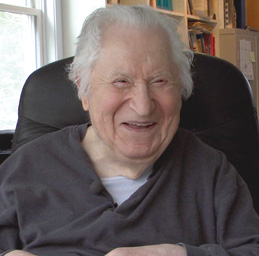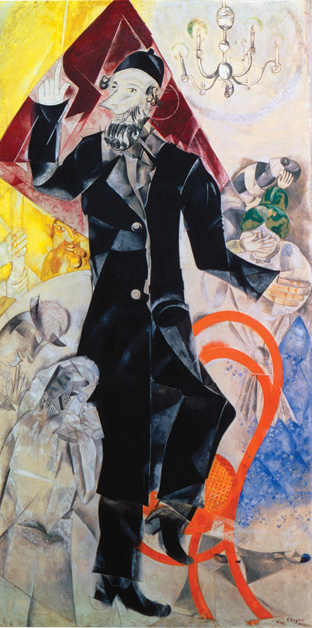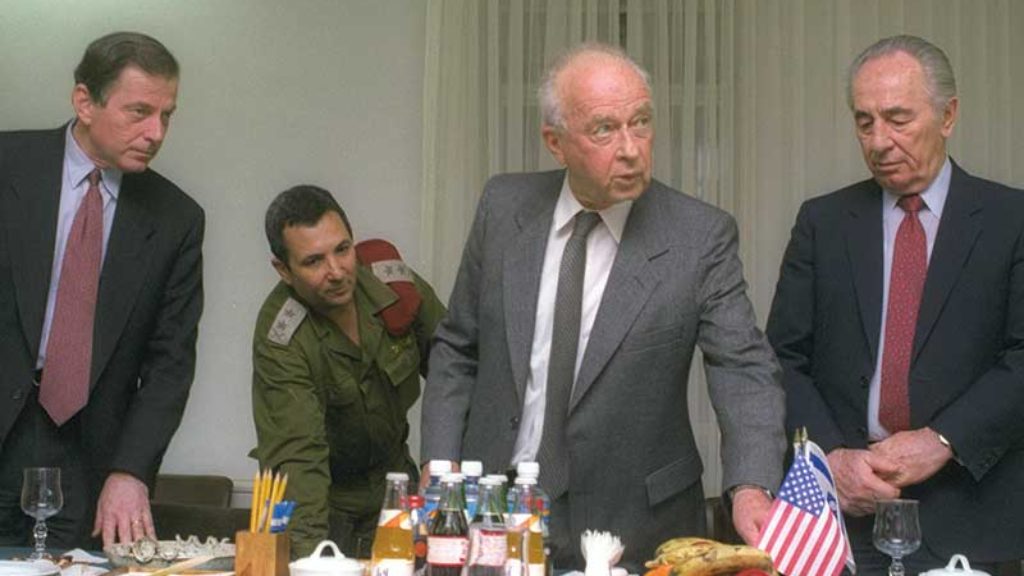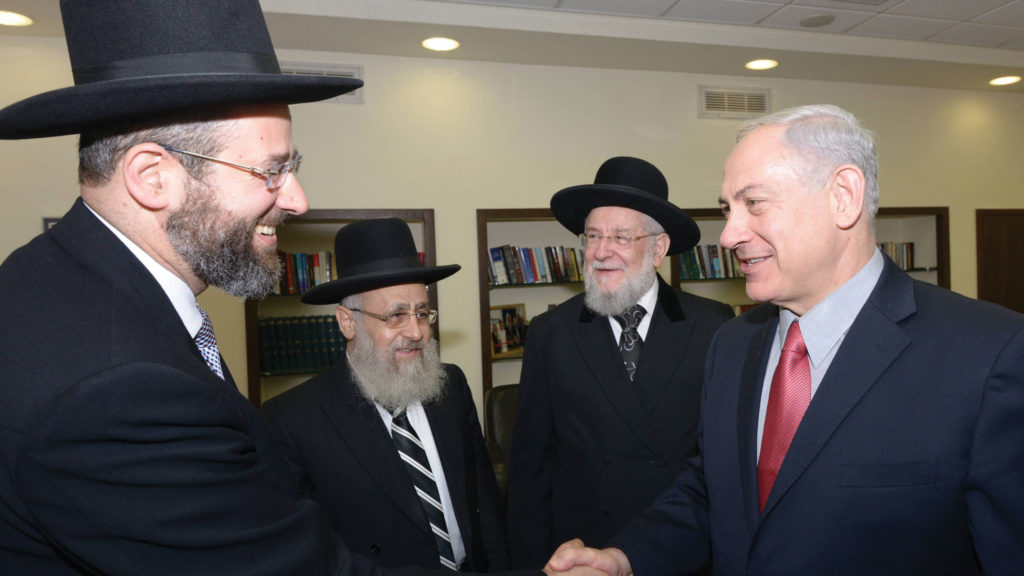Give Ear O Ye Heavens
Benjamin Harshav, the brilliant scholar of Hebrew, Yiddish, and comparative literature, died on April 23 at the age of 86. Those of us who knew him as a friend will miss him keenly, and his loss will be felt in broader circles because there was no one quite like him in literary studies. His lifelong engagement in the forms of poetry has been a unique—and uniquely valuable—project. The term “comparative” in the subtitle of this new book deserves special emphasis. In fact, Three Thousand Years of Hebrew Versification is a somewhat misleading title, since half of the book is devoted to Yiddish poetry. But the importance of Harshav’s last book extends considerably beyond both Hebrew and Yiddish poetry. Its opening essays are titled “Basic Aspects of Meter and Rhythm” and “Do Sounds Have Meaning?” and it is informed by a powerful theory of how poetry works.
Hebrew and Yiddish are extraordinarily well-suited to the perspective of comparative literature; as Harshav writes, their literatures are “comparative literatures par excellence.” Hebrew poetry has creatively adopted a rich variety of poetic systems in the course of three millennia, from Syro-Canaanite parallelistic verse in the biblical period to the improbable yet spectacularly successful embrace of Arabic quantitative verse (improbable since Hebrew vowels do not, strictly speaking, have quantity) and monorhymes in medieval Andalusia to syllabic verse in early modern Italy, accentual-syllabic verse in Eastern Europe, and free verse in the era of modernism. Yiddish poetry, though a mere seven centuries old, exhibits, as Harshav shows in instructive detail, a similar evolving interaction with surrounding literatures and the sound of their poetry.
Born in Vilna in 1928, Harshav’s native language was Yiddish, but he was also exposed to Hebrew well before his immigration to Israel in 1948. When the Nazis invaded Lithuania in 1941, his family fled to Russia, and so his schooling was then in Russian, including a year of university studies. To these languages he added German, English (his principal professional language after Hebrew), French, and some Italian; given his place of birth, he must have been able to negotiate Lithuanian and Polish. He once remarked to me that, knowing so many languages, he felt there was none that was entirely his own, but, in fact, he was a master of both Hebrew and Yiddish, and he had the rare linguistic resources to deal authoritatively with the broad international sweep of Hebrew and Yiddish poetry.
Harshav is often thought of as a formalist, and the disciples he brought with him from Jerusalem in the mid-1960s when he created the influential Department of Poetics and Comparative Literature at Tel Aviv University certainly were formalists, but his own approach to literary analysis was always more nuanced. It is true that a large part of the present volume involves intricate technical analysis—a great deal of it is not for the casual reader—employing diagrams, statistical tables, counts of syllables and stresses per line, and so on. But this rigorous attention to poetry’s formal units is repeatedly colored by Harshav’s understanding that poetic form is not a mechanical matter. Most discussions of prosody view it as providing a fixed quantifiable grid of rhythm, stresses, and rhyme. Harshav persuasively argues that such views do not adequately explain the way we in fact read poetry:

The meter lies in the base of the poetic text; it is the infrastructure of any rhythmical reading. But the actual rhythmical pattern is woven out of the irregularities that permeate the whole body of the verse. The regular meter is the symmetrical warp, and the free local configurations make up the colorful woof.
And, just a little further on in this essay on meter and rhythm, he notes, “A text is said to have a meter when the metrical matrix can be read in that meter. However, for expressive purposes we may not read it metrically.” Though Harshav does not use the word, I think what he is saying is that there is an element of interpretive performance in the reading of poetry, even when it is read silently, which varies from one performer to the next and is not strictly bound to the prosodic grid.
His is a flexible formalism, nicely attuned to the unpredictable character of poetry itself. That flexibility was evident in his long 1972 article for the Encyclopaedia Judaica, “Prosody, Hebrew,” which was hailed as a classic when it appeared and now constitutes the nucleus of the present book’s account of Hebrew poetry. His discussion of biblical poetic parallelism here is exemplary. Harshav’s example here is the Song of Moses, which begins “Give-ear, O-ye heavens, and-I-will-speak; and-hear, O-earth, the-words-of-my-mouth” (Deut. 31: 1–2). Though such semantic parallelism was already identified in the 18th century as the basis of biblical verse, the many ostensible exceptions led to a long line of confusions, some analysts rejecting parallelism altogether as an organizing principle, some promoting questionable theories in which syllable count, syntactic units, even purported musical features were put forth as the basis of the poetic system. Harshav, by contrast, provides an elegant and sensibly flexible account of how parallelism works in biblical poetry. There are, he proposes, three discrete elements that may be parallel between the two halves of a line: meaning, syntax, and the number of accents. In some lines, all three elements will converge; in others, only one or two will appear. Biblical scholars, alas, have taken little note of Harshav’s refinement of the idea of poetic parallelism because, as they are not, by and large, readers of poetry, they are also definitely not readers of the Encyclopaedia Judaica.
Three Thousand Years of Hebrew Versification: Essays in Comparative Prosody includes many subtle, close readings of Hebrew and Yiddish poems. It also provides finely precise accounts of different poetic systems that are sometimes almost startling in their analytic power, as, for example, his mathematically rigorous description of the permutations of quantitative meters in medieval Hebrew poetry. Prosody is a subject that has attracted assiduous but often-pedestrian minds. Harshav was certainly assiduous, but there was nothing pedestrian about him. The last time I visited Irving Howe, just a few weeks before his death in 1993, Harshav’s name came up. He surprised me, for he was scarcely a man given to effusive praise, when he said, “Of all the people I know, the one I would be most inclined to call a genius is Benjamin.” As Harshav went on to do things one would scarcely have predicted when he published his precocious first essay on Yiddish free verse (reprinted in this volume) in 1953, Howe’s description was increasingly justified.
Where, then, did Harshav’s intellectual enterprise go beyond formalism? It was actuated by a passionate and creative engagement with literature that was not always shared by his Tel Aviv disciples. He began writing poetry in Yiddish in his mid-teens under the pseudonym H. Binyomin, and those more competent than I to judge the Yiddish poems say they are extraordinary. Later, using another pseudonym, Gabi Daniel, he published Hebrew poetry of a high order of formal complexity with often challenging thematic content. (A 900-page edition of his poems in both languages, with facing Hebrew translations of the Yiddish, is scheduled for publication in Israel in the coming months.)
In subtle ways, the artistic presence of Daniel/Binyomin makes itself intermittently felt in the scholarly taxonomies of Harshav. Most of this last book of his is devoted to what one would have to call dry analysis, yet there are moments when the formal analysis flows into an illumination of the experiential power of the poetry. Thus, in discussing a prosodic example from the work of the American-Yiddish poet H. Leivick, Harshav, after presenting the text of the poem in Yiddish, in transliteration, and then in translation, shows what its formal patterns express. The poem’s last four lines read:
Dine finger tsien zikh nokh diner,
Dine finger frirn oyf gefroyrene felder—
vayse betn—vi gefroyrene felder—
bloye finger oyf gefroyrene felder.
(Thin fingers grow thinner, / Thin fingers freeze in freezing fields— /
White beds—like freezing fields— / Blue fingers in freezing fields.)
Harshav observes:
The last sentences, emphasized here, are perhaps the most powerful expression of sexual starvation in Yiddish poetry. The alliterative spell of f throughout the poem (25 f’s), repetitions, symbolically detached images—the unsaid wants to develop and receives a new, unsaid symbol: a mystic mood results. The lofty tone is due to the high syllable-stress ratio (on average 3:4). A wholeness of strophe (or rather, of a free line-group) is thus also achieved.
A hallmark of Harshav’s approach to poetry is the way he here links mystic moods and sexual starvation with a mathematical ratio between syllable and stress. Poetry as he sees it is a probing representation of emotion and human dilemmas, but it is a representation realized through the formal resources of verse, through the patterning of sound and the working with and against the prosodic grid.

From the early 1990s, Harshav began to address large questions of cultural history. This turn began almost accidentally. He and his wife Barbara Harshav, a well-known translator, were completing a large bilingual anthology of American-Yiddish poetry. They had been spending the year in Berlin at the Institute for Advanced Studies there, and then they were obliged to stay a second year because health problems prevented her from traveling. Harshav had begun to write an introduction to the anthology, lacking a good deal of the relevant bibliographical resources in Berlin and hence utilizing his own formidable mental storehouse of knowledge. The introduction grew and grew, eventually becoming an independent book, The Meaning of Yiddish, which proved to be a remarkable general description of the distinctive nature of Yiddish as a language and of how it reflected its cultural setting. It was followed in 1993 by what may be regarded as a companion volume on Hebrew, Language in Time of Revolution. Though it is chiefly devoted to a beautifully lucid account of the revival of Hebrew, it begins with a 75-page essay on Jewish modernity, what Harshav calls “the modern Jewish revolution.” He was not trained as a historian, but scholars in the field might well envy the conceptual clarity, the command of minute detail, and the intellectual vigor of this overview of a watershed century of Jewish history. Jews in this period were renegotiating the basic terms of Jewish existence, and Harshav keeps in clear view the multiple and divergent directions in which this renegotiation took place.
A small but telling instance in this account is his shrewd identification of 1897 as a major point of departure toward different ideological and geographical horizons. In 1897 Herzl founded the World Zionist Organization in Basel; the Bund came on the scene in Vilna; the Yiddish daily Forverts began publication in New York; the major Hebrew literary journal Ha-Shiloah was inaugurated in Odessa; Simon Dubnov, the intellectual architect of Jewish Autonomism, published the first of his Letters on Old and New Judaism; and, Harshav adds, in this same year Sigmund Freud joined the Vienna chapter of B’nei B’rith. “Thus,” he summarizes, “an entire generation—almost sixteen years—passed from the shock of [the waves of pogroms in] 1881–1882 to the formation of political and institutional instruments in 1897.”
In retrospect, Harshav’s publishing begins with a slow but precious rivulet that lasts a quarter of a century before becoming a torrent for another quarter-century. At first, he had a certain reputation for not finishing things. He did not complete the Yale dissertation that he was working on under the direction of René Wellek, the leading comparative literature scholar of that generation. And although he had developed the principles of a general theory of literature early on and expounded it in the classroom, the big book on theory never appeared (he was still working on it in his last years). He did publish three advance statements of the large theoretical synthesis, two books in Hebrew (both in 2000) and Explorations in Poetics (2007), and many of his individual essays were seminal. He was involved, moreover, in a flurry of other activities. Besides creating the department in Tel Aviv, in the late 1960s he founded a Hebrew journal, Ha-Sifrut, which raised the critical discussion of literature in Israel to a whole new level. In the 1970s, he inaugurated an English-language journal, Poetics Today, which is still published. A short monograph on the expansive rhythms in the Hebrew poetry of Uri Zvi Greenberg appeared in 1978. And he produced numerous anthologies in Hebrew and English as well as one translation after another—from German and Yiddish poetry into Hebrew, from Yiddish and Hebrew into English (these in collaboration with Barbara Harshav).
The turning point, however, came with the two books he began in Berlin, The Meaning of Yiddish and Language in Time of Revolution. Whatever barriers of perfectionism and distraction he had faced were now broken. America may have also played a role. He had moved from Tel Aviv to a chair in comparative literature at Yale in 1986, perhaps out of some desire to be on a bigger stage and surely out of a need to free himself from the dizzying round of institutional and editorial obligations in which he had become entangled in Tel Aviv. (It was with this move, incidentally, that he decided to change his family name from Hrushovski to Harshav for the benefit of Americans; Israelis, in any case, had never been able to pronounce the hr properly.) At Yale he no longer engaged in institution-building, and after the breakthrough in Berlin he produced a steady stream of work, both new books and the assembling and revising of his early writings, as well the many translations and anthologies.
Yet another turning point presented itself in the early 1990s. The downtown branch of the Guggenheim Museum was planning an exhibition in 1993 of the spectacular murals that Chagall had painted for the Yiddish Art Theater in Moscow in 1921. Knowing of his love of modern art together with his knowledge of Russian and Yiddish, the museum sent Harshav to Moscow to examine the newly accessible Chagall archives. On his return, Harshav produced the main catalogue essay, a brilliant consideration of Chagall’s relation to vernacular Jewish culture and to European modernism and a broad exposition of what he called “Jewish discourse” from Sholem Aleichem to Bellow and Roth. Harshav went on to produce four books on Chagall that were both art-critical and biographical. A few years ago, the distinguished art critic Jed Perl pronounced Harshav our pre-eminent authority on Chagall. All this from a writer who had been often identified primarily as an expert on the formal structures of poetry.
Benjamin Harshav really was an anomaly in the academic world. His brilliance alone would have made him so, since true brilliance is always a rare commodity, and there is good reason to suspect that in recent decades it has become even rarer in literature departments as the best and the brightest, out of understandable considerations of career and intellectual climate, have migrated elsewhere. When Harshav moved from Tel Aviv to New Haven in 1986, the so-called School of Yale had dominated American literary theory for well over a decade. Although Harshav had social relations with the members of this group, he never became part of it. In fact, the only Yale faculty person with an intellectual profile somewhat akin to his was the late John Hollander, who was both a fine poet and a superb scholar of Renaissance poetry. Harshav, with his commitment to conceptual rigor and clarity, had no patience for Lacan, Derrida, Foucault, Althusser, and the other French masters of obfuscation who fascinated his Yale colleagues (though not, it should be said, the aggressively idiosyncratic Harold Bloom). Having absorbed the work of Roman Jakobson—to whose memory Three Thousand Years of Hebrew Versification is dedicated—and the Russian Formalists, as well as a very wide variety of European literary scholarship and theory, he had no interest in the changing hemlines of academic fashion.
Instead, he marked out his own conception of form and expression in literature very early in his career and followed it through in his generalizing articles and in his studies of individual poets. One regrets that it will not issue in the big book of theory on which he long meditated. What ultimately drives the best work on literature and on other kinds of artistic expression is a love of the beauty and complexity that are realized through them. (Such love has also been in short supply in departments of literary studies over the past several decades.) Harshav, as his new book shows from beginning to end, was a dedicated analyst of formal structures and technical procedures. But underlying this passion for analysis was a passion for art, manifested in his own poetry, in his translations, in his anthologies, in his work on Chagall, and even, if one looks carefully, in the many close readings of poems incorporated in his investigations of prosody.
For more than six decades, Benjamin Harshav instructed readers in the operations of poetic technique, but he was always mindful of the subtle and profound articulation of human experience it served. Three Thousand Years of Hebrew Versification is a vivid reminder of the precious legacy he has left us.
Suggested Reading

A Life with Consequences
Yitzhak Rabin was a realist who saw peacemaking not as the source of security but as a further development that needed to be based upon security.

No Joke
Roth's new novel takes surprising turns on familiar territory.

Memory and Terror
How does a survivor of an infamous hijacking piece together her history?

Fathers & Sons
This summer, as the current Askhenazi chief rabbi was being investigated for corruption, and issues of religion and state dominated public debate, new Ashkenazi and Sephardi chief rabbis were elected. The process was messy, complicated, and ugly. The result? Sixty-eight votes apiece for the sons of two previous chief rabbis. What does a broken rabbinate mean for Israel?
Comments
You must log in to comment Log In